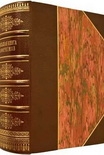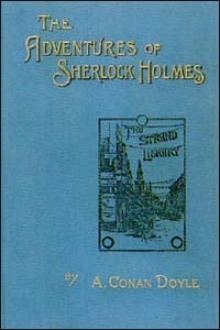My Autobiography Charles Chaplin (best books to read ever TXT) 📖

- Author: Charles Chaplin
Book online «My Autobiography Charles Chaplin (best books to read ever TXT) 📖». Author Charles Chaplin
In the creation of comedy, it is paradoxical that tragedy stimulates the spirit of ridicule; because ridicule, I suppose, is an attitude of defiance: we must laugh in the face of our helplessness against the forces of nature – or go insane. I read a book about the Donner party who, on the way to California, missed the route and were snowbound in the mountains of Sierra Nevada. Out of one hundred and sixty pioneers only eighteen survived, most of them dying of hunger and cold. Some resorted to cannibalism, eating their dead, others roasted their moccasins to relieve their hunger. Out of this harrowing tragedy I conceived one of our funniest scenes. In dire hunger I boil my shoe and eat it, picking the nails as though they were bones of a delicious capon, and eating the shoe-laces as though they were spaghetti. In this delirium of hunger, my partner is convinced I am a chicken and wants to eat me.
For six months I developed a series of comedy sequences and began shooting without a script, feeling that a story would evolve from comedy routines and business. Of course, I was led up many a blind alley, and many amusing sequences were discarded. One was a love scene with an Eskimo girl who teaches the tramp to kiss in Eskimo fashion by rubbing noses together. When he departs in quest of gold, he passionately rubs his nose against hers in a fond farewell. And as he walks away he turns and touches his nose with his middle finger and throws her a last fond kiss, then surreptitiously wipes his finger on his trousers, for he has a bit of a cold. But the Eskimo part was cut out because it conflicted with the more important story of the dance-hall girl.
During the filming of The Gold Rush I married for the second time. Because we have two grown sons of whom I am very fond, I will not go into any details. For two years we were married and tried to make a go of it, but it was hopeless and ended in a great deal of bitterness.
The Gold Rush opened at the Strand Theatre in New York and I attended its première. From the moment the film started, showing me blithely rounding a precipice unconscious of a bear following, the audience yelled and applauded. Throughout the laughter there was sporadic applause till the end of the picture. Hiram Abrams, the United Artists sales manager, later came up and embraced me. ‘Charlie, I guarantee that it will gross at least six million dollars’ – and it did!
After the première, I had a collapse. I was staying at the Ritz Hotel and I could not breathe, so I frantically telephoned a friend. ‘I’m dying,’ I gasped. ‘Call my lawyer!’
‘Lawyer! You want a doctor,’ said he, alarmed.
‘No, no, my lawyer, I want to make a will.’
My friend, shocked and alarmed, called both, but, as my lawyer happened to be in Europe, only the doctor arrived.
After a perfunctory examination he found nothing wrong but an attack of nerves. ‘It’s the heat,’ he said. ‘Get out of New York and down by the ocean where you can be quiet and get the sea air.’
Within half an hour I was bundled off to Brighton Beach. On the way I wept for no reason. However, I procured a front room at a hotel facing the ocean and sat at the window breathing in deep draughts of sea air. But crowds began to gather outside the hotel: ‘Hi, Charlie!’ ‘Attaboy, Charlie!’ so that I had to move back from my window in order not to be seen.
Suddenly there was a yell like the barking of a dog. It was a man drowning. The lifeguards brought him in, right in front of my window, and gave him first aid, but it was too late; he was dead. No sooner had the ambulance taken him away than another barked. In all there were three brought in: the other two recovered. I was in a worse state than ever, so I decided to return to New York. Two days later I was well enough to return to California.
twenty
BACK in Beverly Hills, I received an invitation to meet Gertrude Stein at the house of a friend of mine. When I arrived, Miss Stein was seated on a chair in the centre of the drawing-room, dressed in brown, wearing a lace collar, her hands on her lap. For some reason she looked like Van Gogh’s portrait of Madam Roulin, only instead of red hair with a bun on top Gertrude had short-cropped brown hair.
The guests stood around at a respectful distance, forming a circle. A lady-in-waiting whispered something to Gertrude, then came to me. ‘Miss Gertrude Stein would like to meet you.’ I hopped forward. There was little opportunity to talk at that moment because others were arriving and waiting to be introduced.
At lunch the hostess placed me next to her and in some way or other we got on to the subject of art. I believe it started by my admiring the view from the dining-room window. But Gertrude showed little enthusiasm. ‘Nature,’ she said, ‘is commonplace; imitation is more interesting.’ She enlarged on this thesis, stating that imitation marble looked more beautiful than the real thing, and that a Turner sunset was lovelier than any real sky. Although these pronouncements were rather derivative, I politely agreed with her.
She theorized about cinema plots: ‘They are too hackneyed, complicated and contrived.’ She would like to see me in a movie just walking up the street and turning a corner, then another corner, and another. I thought of saying that her idea was a paraphrase of that mystic emphasis of hers: ‘Rose is a rose is a rose’ – but an instinct stopped me.
The luncheon was served on a beautiful Belgian lace tablecloth, which evoked several compliments





Comments (0)